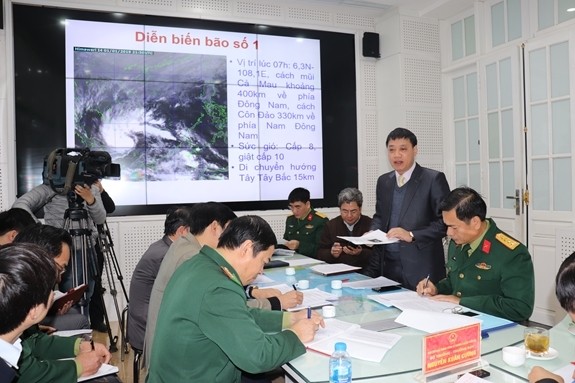* First storm of 2019 heads towards Southern Vietnam
As reported by the permanent office of the steering committee, the five provinces of Bac Lieu, Ca Mau, Ba Ria-Vung Tau, Ben Tre and Kien Giang announced sea prohibition on January 1 in an effort to cope with the storm.
As of 6am today, the border guard forces worked with local authorities, vessel owners and captains to inform more than 76,000 vehicles with around 405,600 sailors on board of the developments and direction of storm Pabuk to proactively find shelters and escape from the hazardous zones.
Addressing the meeting, Minister of Agriculture and Rural Development, Nguyen Xuan Cuong, who heads the steering committee, stressed that localities must determine this as a dangerous storm with high risks of influence.
He asked the four remaining coastal provinces to depend on the reality to announce sea prohibition, while urging for continuous measures to support the vessels still at sea to move to safe places.
The border guard forces were requested to continue coordinating with the Directorate of Fisheries and localities to ensure that no vessels were left in the storm’s dangerous zones. The Ministry of Foreign Affairs was tasked with informing countries in the region to create conditions for Vietnamese boats and fishermen to seek storm shelters.
The Directorate of Fisheries was also asked to take measures guiding localities to protect their aquaculture cultivation areas.
















